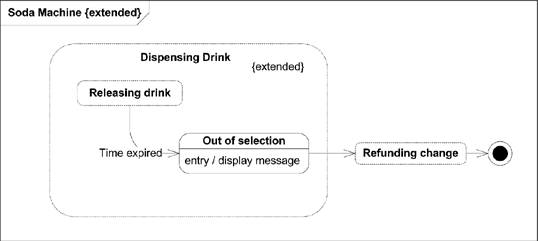Section 8.4. Protocol State Machines
8.4. Protocol State MachinesProtocol state machines capture the behavior of a protocol, such as HTTP or a challenge-response speakeasy door. They aren't tied to a particular implementation of a protocol; rather, they specify the state changes and events associated with a protocol-based communication. Unlike in behavioral state machines, states in protocol state machines represent stable situations where the classifier isn't processing any operation and the user knows its configuration. Figure 8-16. State machine extension Protocol state machines differ from behavioral state machines in the following ways:
[precondition] event / [postcondition]
Figure 8-17 shows a simplified version of the Simple Mail Transport Protocol (SMTP) protocol. Because protocol state machines don't not allow activities, there is little detail about what the SMTP server actually does when receiving a command from the client. By design, the protocol state machine tells you only what state the protocol implementation will be in, not what it does to get there or how it keeps itself occupied. See "Variations on Statechart Diagrams" for an example of modeling a protocol in more detail. |
EAN: 2147483647
Pages: 132